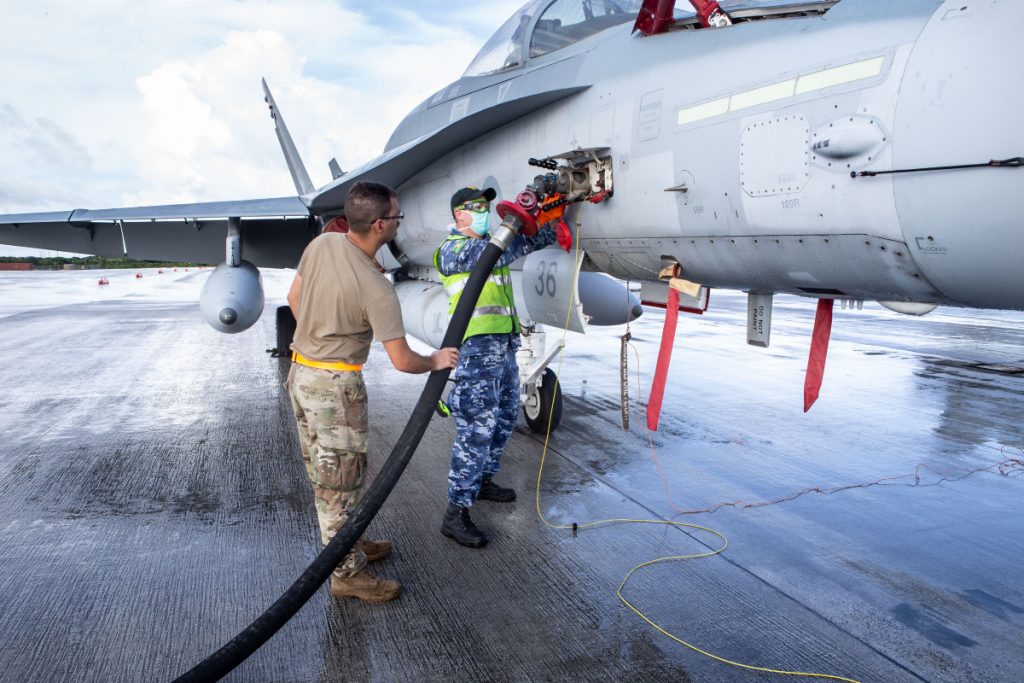
The global energy system is undergoing a rapid and enduring shift with inescapable implications for militaries, including the Australian Defence Force. Electrification and the use of alternative liquid fuels are occurring at scale across the civilian economies. Despite that, fossil fuels, such as diesel and jet fuel, will be around for a long time to come, given their use in long-lived systems like air warfare destroyers, Lockheed Martin’s F-35 aircraft, M1A2 Abrams tanks, and in capabilities still in the design stage but planned to enter service beginning in the mid-2030s such as the Hunter-class frigates.
Australian supply of these fuels is provided by globally sourced crude oil flowing through a handful of East and Southeast Asian refineries. Supply arrangements for these critical commodities are likely to become more fraught, however. This is already occurring because of the fracturing of global supply chains and the drive for national resilience in many nations, driven by Covid-19, the return of coercive state power and, of course, Russian President Vladimir Putin’s war in Ukraine. Australia’s dependence on imports for liquid-fuel security, at least as it pertains to the ADF, extends well beyond insufficient reserves and refineries.
As I explain in a new ASPI report, launched today, the long-term nature of major platform acquisitions, as well as infrastructure investments, means that the Australian government and the ADF must move beyond assessing the implications of this future and begin to plan and act to shape the ADF’s energy future in ways that take advantage of the wider international and domestic energy transition that’s underway. Futureproofing the ADF requires the growth of an alternative fuels sector in Australia to meet broader needs that include but aren’t defined by the ADF alone. That can only be achieved through partnerships because no individual operator or enterprise has a monopoly on the energy sector.
Partnerships can be used to shape the alternative-fuels market in Australia by providing a secure source of investment for alternative-fuel providers. Those fuels can then supplement traditional fuel sources until a complete transition away from fossil fuels can occur.
In this context, the golden thread for Defence is its need for rapid transition towards renewable energy sources as a means to operationalise its strategy among its many and varied plans and contracts. Without the appropriate investment and support, energy security, stable fuel costs and low emissions will remain elusive. Hence, partnerships and co-investments can achieve sustainable change, ensuring Australia’s current and future energy security that the ADF relies upon.
The rapid and long-term shifts occurring in the global energy system are due to technological advances and the availability of cheaper renewable fuels. However, Australia’s dependence on imports for liquid-fuel security places the ADF at risk. The risk isn’t whether the ADF can get to an area of operations and perform poorly but whether it can get there at all.
In the absence of proactive change, Defence may ultimately have to ‘own more and more of [the fuel] supply chain from well (or synthetic fuel plant to bowser’, which would be a bad outcome from all perspectives. In this context, the ADF’s transition to renewable sources isn’t a zero-sum choice that results in operational capability being undermined or degraded. A rapid transition to renewables will make the ADF more effective in doing what the government directs and demands in the more divided and dangerous world and region we’re already experiencing.
The government and Defence must recognise this long-term risk to a fundamental input to our military capability and start acting to mitigate it for the future.

